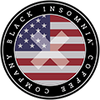
There are so many factors that go into making a solidly “good” cup of coffee, but temperature is one that seems to get less attention.
We all have our own personal temperature preferences when it comes to drinking coffee.
Some of us are more exacting about this than others.
Maybe you won’t take a sip of coffee unless it’s exactly 160°F. (If so, I remember you back from my college barista days—It’s been a long time, man!)
Or, perhaps your sophisticated temperature preference is simply “anything but lukewarm.” (No judgement—I love coffee so much and I’m usually so busy while I’m drinking it that I more or less have to be in this camp.)
Of course, coffee brewing temperature is another matter entirely. Let’s look at both serving and brewing, and see what ideal temperatures we can come up with—using science!
What’s the Best Temperature for Brewing Coffee?
What do coffee experts have to say? Well, if you were to ask the National Coffee Association, they’d tell you that the ideal temperature range to brew coffee at is between 195°F and 205°F.
Scientifically, this range is the sweet spot where the flavor compounds in coffee dissolve into water the easiest. If you brew with hotter water—say, boiling water that’s just come off the stove burner—these compounds dissolve too much.
If you go lower than 195°F, these compounds start taking longer to dissolve. This is why making cold brew takes longer—and why Keurig's don’t extract as much flavor and caffeine as they could, since they typically brew at about 192°F.
Therefore, while you certainly have some wiggle room, 195°F to 205°F is the basic “hot brew” temperature range you should be shooting for—if you want your coffee to be, y’know, good.
So… got a thermometer in your kitchen?
Just messing with you.
While some electric kettles do come with sweet temperature displays and controls, for most people, it’s probably fine enough to just remove boiling water from heat and let it sit for a minute before you pour it over coffee grounds.
What’s the Best Temperature for Serving Coffee?
What about serving temperatures? As we all know—depending on what it’s being served in, of course—coffee typically starts cooling very quickly after it’s served. Add cold milk or creamers to the equation, and it cools even faster.
At home, when people have established “coffee making rituals,” they tend to serve coffee at higher temperatures. Especially if they plan on adding cold creamer or milk.
In coffee shops, retail establishments, and patient care situations, the “ideal serving temperature” is generally lower.
We all remember the McDonald's coffee story.
Coffee’s generally served at lower temperatures in these settings to lower the risks of accidental burning/scalding.
According to this study from a while back, most coffee drinkers tend to drink their coffee at 140°F or below—with most people preferring a temperature within about +/-15 degrees.
Back when I was a barista, we typically served coffee at 145°F—keeping in mind it would usually cool down to 140°F by the time they sat down and took a sip. The hottest we were permitted to serve coffee (upon request) was 165°F, which also happens to be the upper limit of the +/-15 degree from that study.
When some new person thought they could get away with serving coffee at 135°F it almost invariably got brought back as being “too cold.”
All that feedback teaches you one thing: While there’s no one “perfect” coffee serving temperature for everyone, there’s still a pretty small window.
Aiming for about 140 degrees Fahrenheit seems to work well enough for the vast majority of people. But just like different people prefer lighter or darker roasts, creamer or no creamer, sweetener or no sweetener—mileage will vary.
Brewing temps are another matter of course—always aim for between 195°F - 205°F unless you’re making cold brew, or following specific instructions for your brewer.





